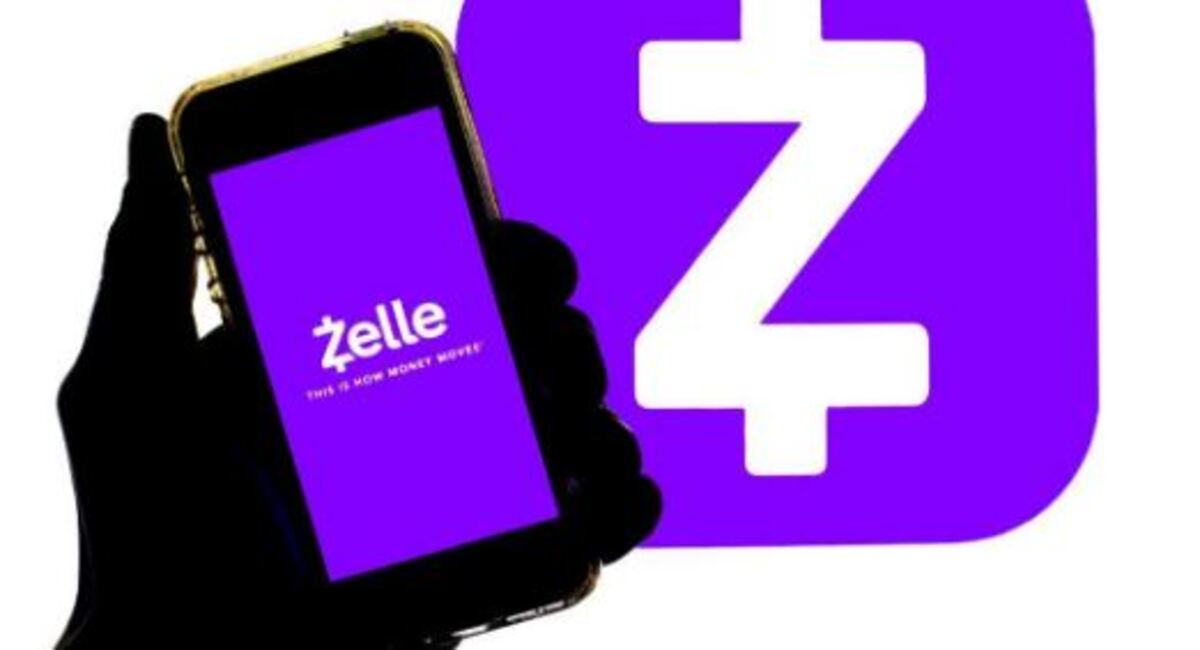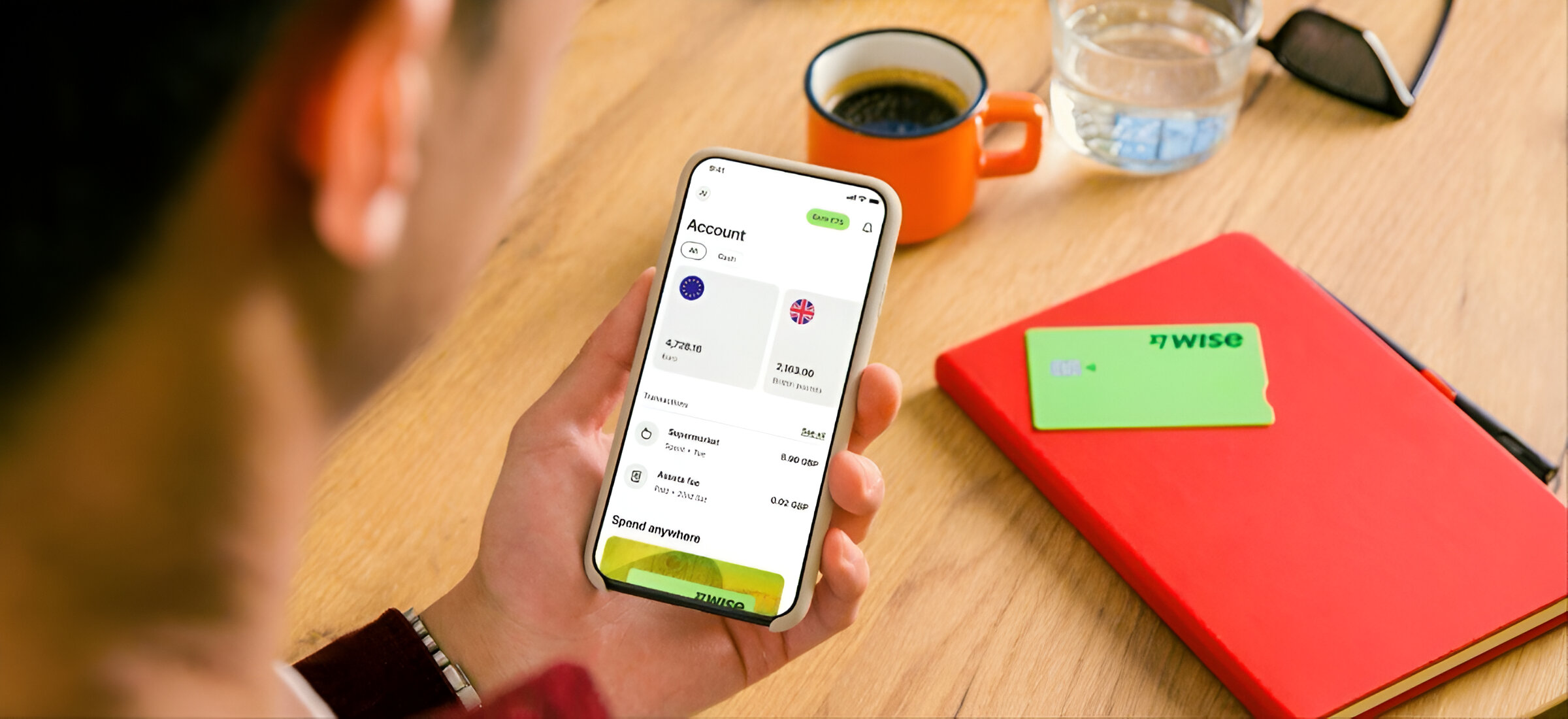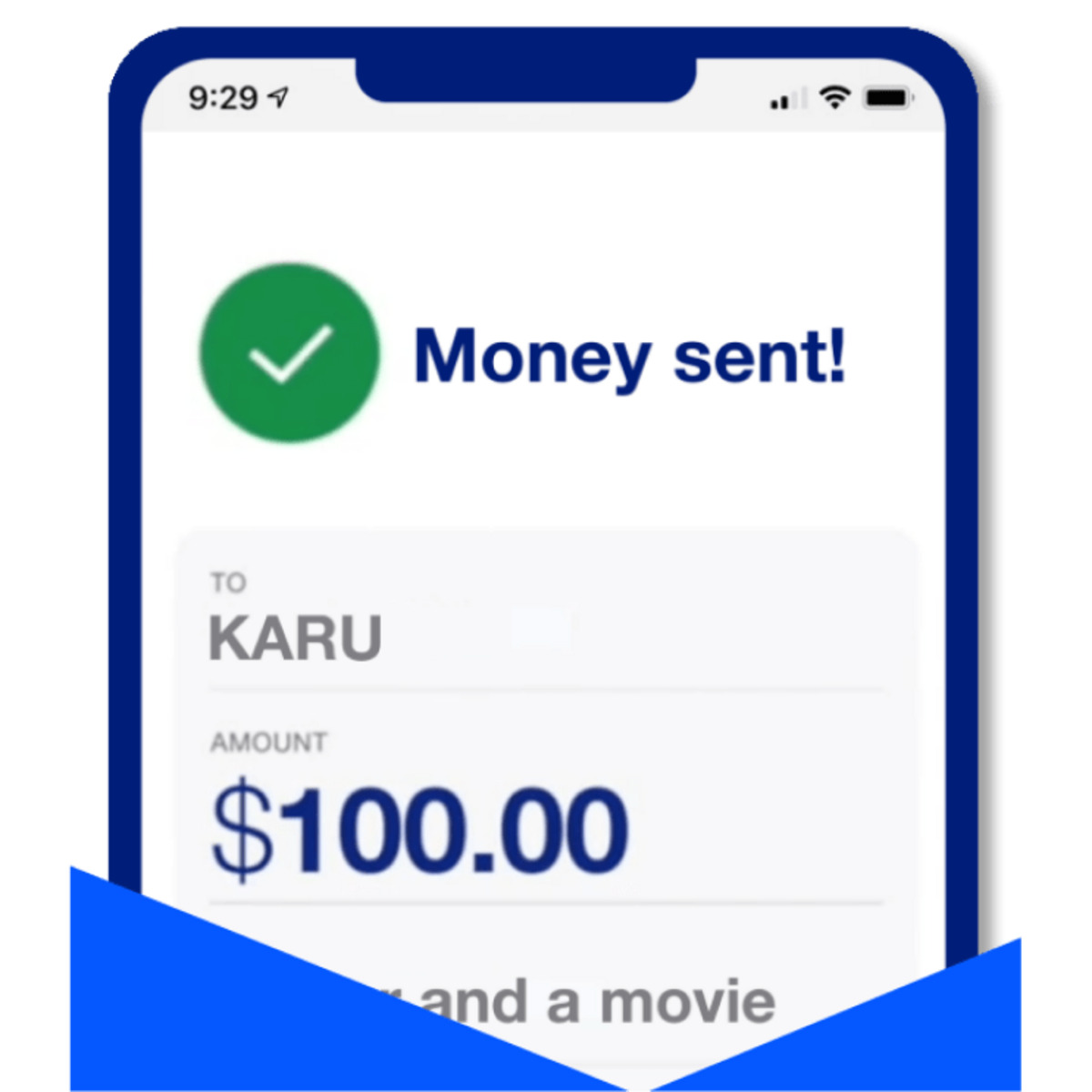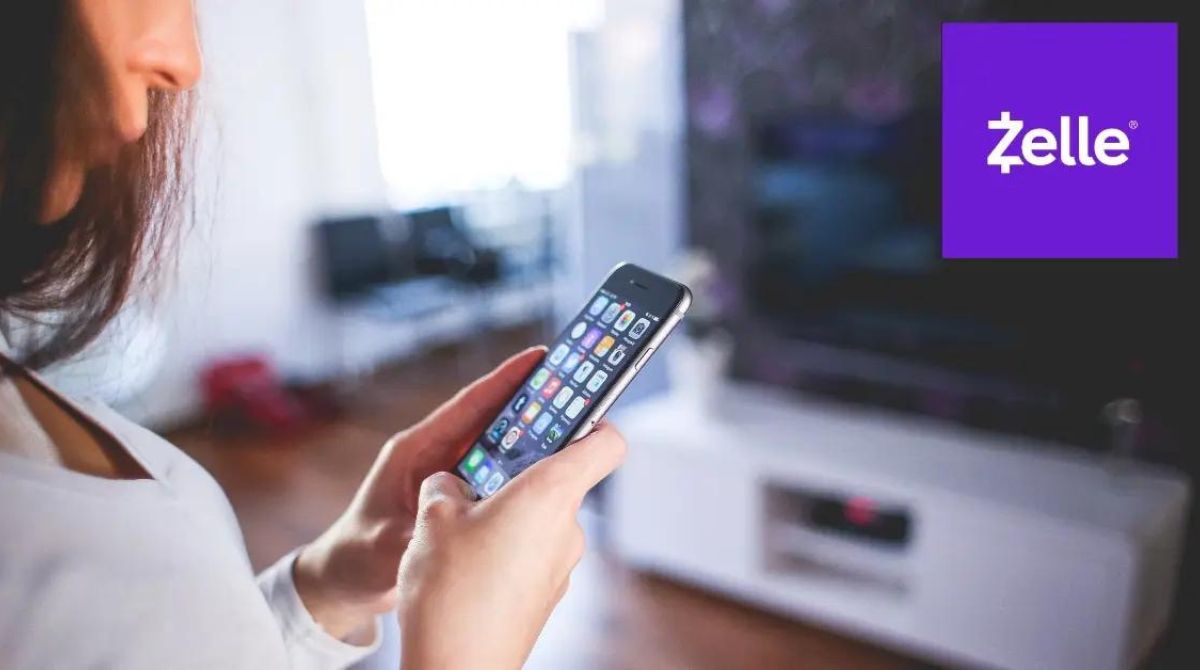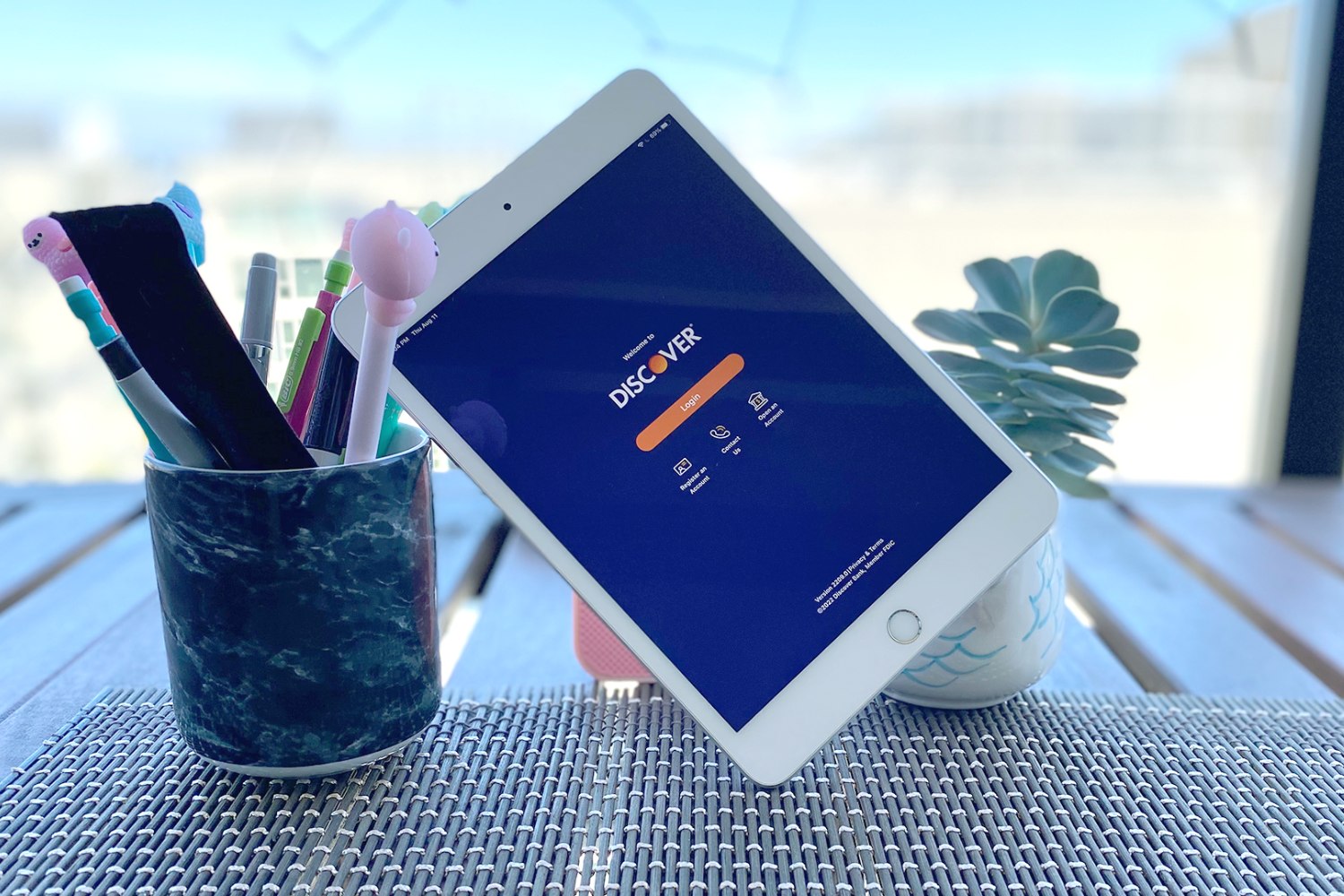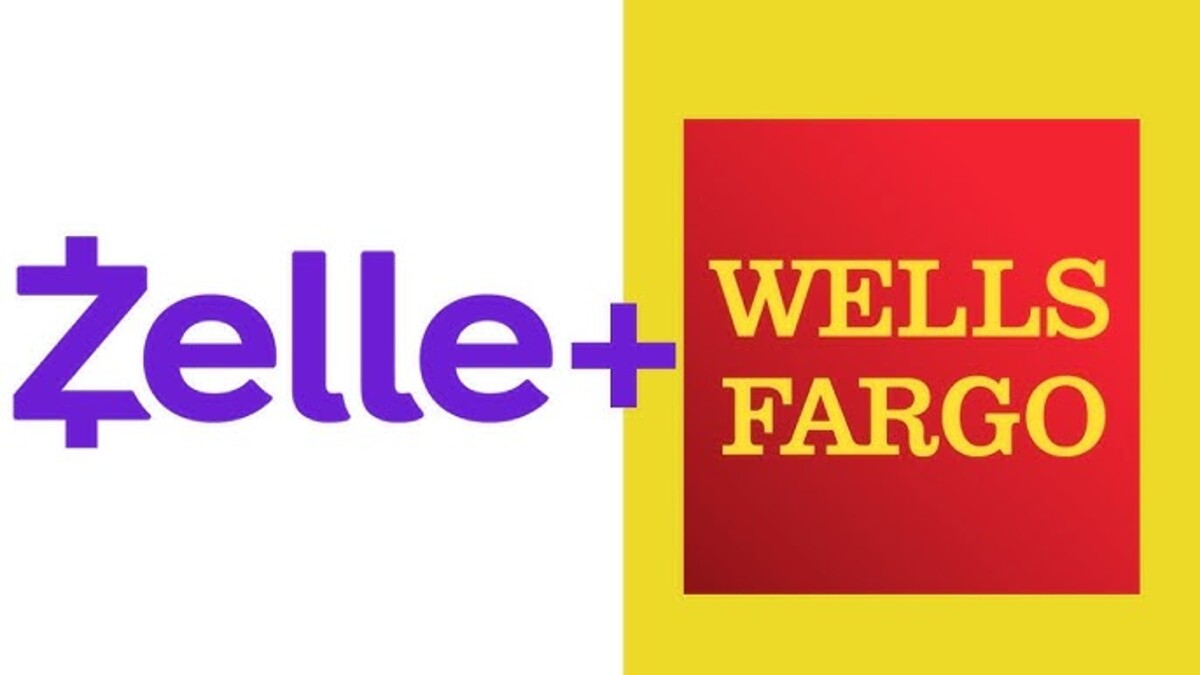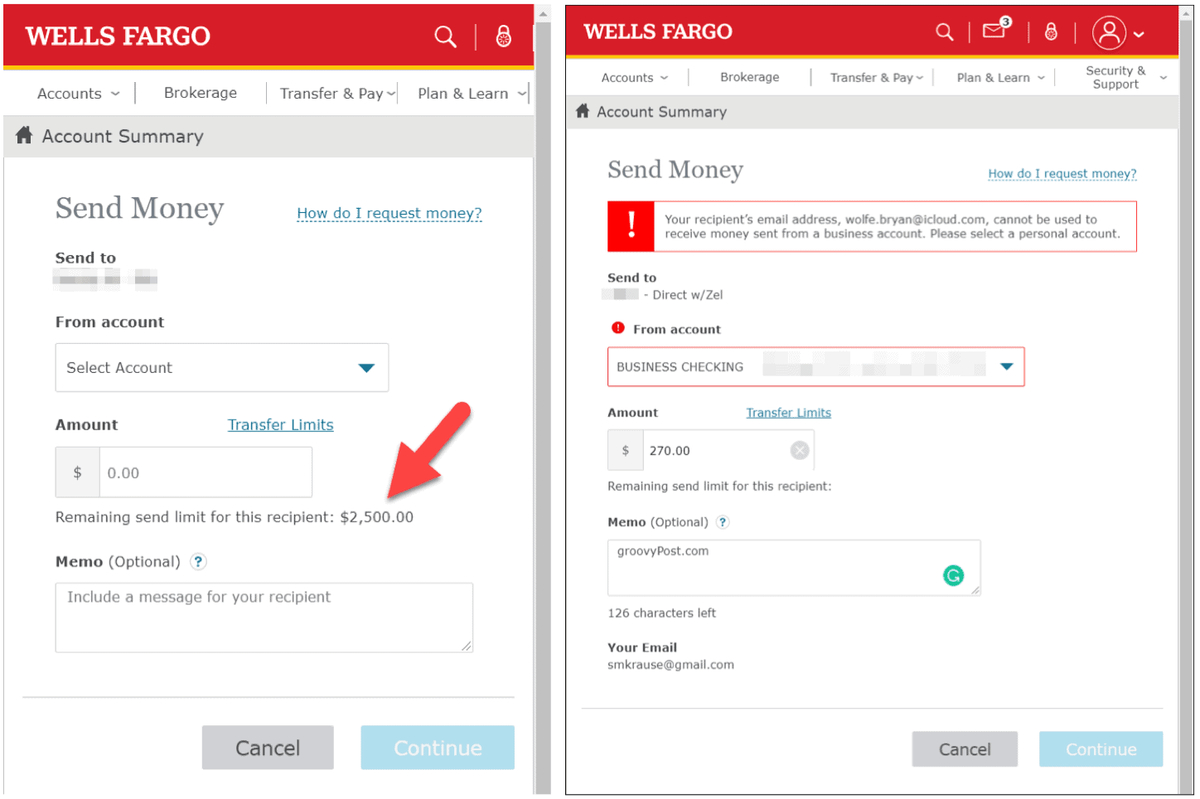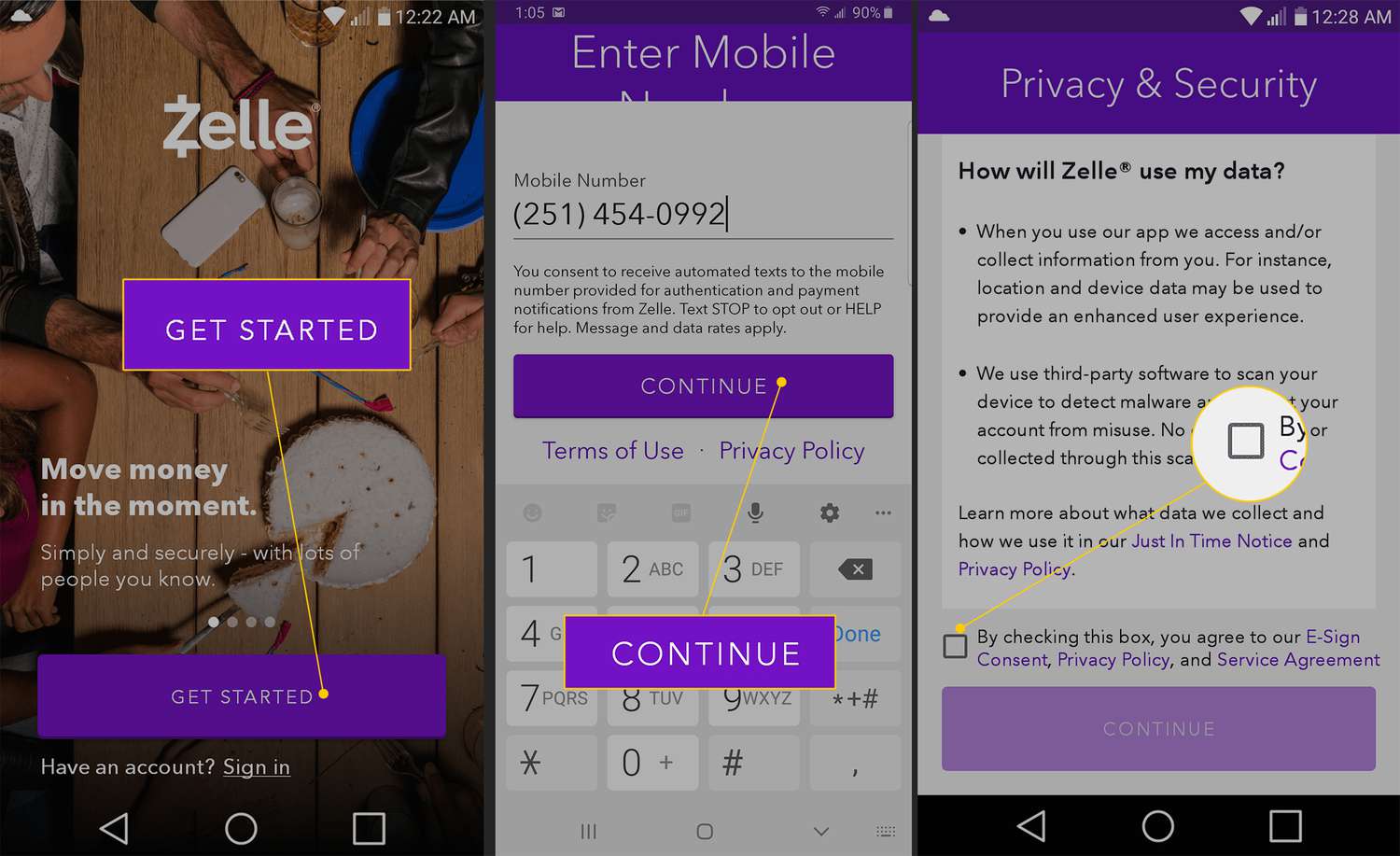Introduction
Zelle is a popular mobile payment app that allows users to send and receive money instantly with just a few taps on their smartphones. Whether you need to pay a friend back for dinner, split the rent with your roommates, or send money to a family member in need, Zelle provides a convenient and secure way to transfer funds. With its seamless integration into many banking apps, Zelle has become a go-to solution for countless individuals who are looking for a quick and hassle-free way to send money to others.
In this article, we will explore the essential information you need to know in order to successfully send money to someone using Zelle. We will walk you through the process of enrolling in the Zelle app, discuss the required information you need to provide, and provide insights into important factors such as transaction limits, fees, and security measures. By the end of this article, you’ll have a comprehensive understanding of what is needed to use Zelle effectively and confidently.
Zelle App
Zelle is a mobile payment app that allows users to send and receive money using their smartphones. The app is available for both iOS and Android devices, making it accessible to a wide range of users. With its user-friendly interface and intuitive design, navigating the Zelle app is a breeze. Whether you’re a tech-savvy individual or not, you’ll find the app easy to use and understand.
To get started with Zelle, you will need to download the app from the App Store or Google Play Store. Simply search for “Zelle” and look for the official Zelle app developed by Early Warning Services LLC. Once downloaded, you can proceed with the enrollment process to start sending and receiving money.
One of the key advantages of using the Zelle app is its integration with many banking apps. Most major banks in the United States have partnered with Zelle to offer their customers a seamless experience. This means you can link your bank account directly to the Zelle app, allowing you to quickly and easily transfer funds without the need to switch between different apps or platforms.
In addition to the convenience of linking your bank account, the Zelle app also provides a range of features to enhance your money transfer experience. You can easily view and manage your transaction history, track pending payments, and set up recurring payments or reminders. The app also allows you to split payments with multiple recipients, making it a great tool for group expenses or bills.
Enrolling in Zelle
Before you can start sending money with Zelle, you will need to enroll in the app. The enrollment process is simple and straightforward, requiring you to provide some basic information.
To begin, open the Zelle app on your smartphone and click on the “Enroll” or “Sign Up” button. You will be prompted to enter your email address or mobile phone number. Choose the option that you prefer and proceed to verify your identity.
Next, you will be required to provide your full name, date of birth, and a password to secure your account. It’s important to choose a strong, unique password to protect your account from unauthorized access.
Once you have entered your personal details, you will need to select your bank from the list of participating financial institutions. If your bank isn’t listed, don’t worry—many banks offer the option to enroll directly through their mobile banking app.
After selecting your bank, you will be prompted to enter your online banking credentials. This will allow Zelle to securely link your bank account to the app. Rest assured that Zelle employs advanced encryption and security measures to safeguard your sensitive information.
Finally, you will need to review and accept the Zelle terms and conditions. It’s important to read through this information carefully to understand how Zelle handles your data and any applicable fees or limits. Once you have accepted the terms, you’re all set to start using Zelle to send money to others.
Enrolling in Zelle is a one-time process, and it only takes a few minutes to get started. Once you have successfully enrolled and linked your bank account, you can conveniently send money to anyone who also has a Zelle account, directly from your smartphone.
Required Information
When using Zelle to send money to someone, you will need to provide certain information to ensure a smooth and secure transaction. Here are the key pieces of information you will typically be required to provide:
- Recipient’s Email or Mobile Number: In order to send money to someone using Zelle, you will need to know either their email address or mobile phone number. This is the information that you will use to identify the recipient during the transaction process. Make sure you have the correct and up-to-date contact details for the person you wish to send money to.
- Confirmation Code: Zelle may prompt you to enter a confirmation code during the transaction process. This code is usually sent to the recipient to verify their identity and ensure that the money is being sent to the intended party. The confirmation code adds an extra layer of security to the transaction.
- Linked Bank Account: Before you can send money with Zelle, you will need to link your bank account to the app. This is typically done during the enrollment process and involves providing your online banking credentials. Linking your bank account allows Zelle to securely transfer funds between your account and the recipient’s account.
It is important to double-check the accuracy of the information you provide, especially the recipient’s details. Sending money to the wrong email address or mobile number can result in the funds being transferred to the wrong person, and it may be challenging to recover the funds once the transaction is complete.
To ensure the security of your transactions, Zelle utilizes encryption technology and other measures to protect your personal and financial information. However, it is always a good idea to exercise caution when sharing sensitive details and to keep your Zelle account login credentials secure.
By providing the necessary information accurately and keeping your account details secure, you can confidently use Zelle to send money to friends, family, or anyone else with a Zelle account.
Recipient’s Email or Mobile Number
To send money to someone using Zelle, you will need to know either their email address or mobile phone number. This information serves as the unique identifier for the recipient and enables Zelle to direct the funds to the correct individual.
When initiating a transaction through the Zelle app, you will be prompted to enter the recipient’s email address or mobile number. It is important to ensure you have the accurate and up-to-date contact details of the person you wish to send money to.
If you are unsure of the recipient’s exact email address or mobile number, it is recommended to reach out to them directly to confirm the information. Sending money to the wrong recipient can result in complications and may be difficult to rectify once the funds have been transferred.
When entering the recipient’s email or mobile number in the Zelle app, it is crucial to double-check for any typos or errors. Even a small mistake can lead to the funds being sent to the wrong person. Take your time to ensure accuracy and confirm the details before completing the transaction.
It is worth noting that the recipient must also have a Zelle account in order to receive the funds. If they don’t have an account already, they will need to enroll in Zelle using the same email address or mobile number you have provided. Once they have enrolled, they will be able to access the funds you sent them.
By providing the correct email address or mobile number for the recipient, you can ensure that the money is securely transferred to the intended person. Zelle’s system is designed to facilitate quick and seamless transactions, allowing you to send money with confidence and convenience.
Confirmation Code
Zelle uses a confirmation code as an additional layer of security during the transaction process. When sending money to someone, you may be prompted to enter a confirmation code to verify the recipient’s identity and ensure that the funds are being sent to the intended party.
The confirmation code is typically sent to the recipient via email or SMS. It serves as a unique identifier for the transaction and helps prevent unauthorized access or fraudulent activity. By requiring the recipient to enter the confirmation code, Zelle adds an extra layer of protection to the money transfer process.
To ensure the accuracy of the confirmation code, it is important to communicate with the recipient and confirm that they have received the code. This will help avoid any delays or confusion during the transaction. If the recipient did not receive the confirmation code, they may need to check their spam or junk email folder or ensure that their mobile phone is capable of receiving SMS messages.
Upon sharing the confirmation code with the recipient, it is crucial to emphasize the importance of keeping the code confidential. The code acts as a security measure, and sharing it with untrusted individuals could potentially compromise the transaction and the recipient’s funds.
In cases where the recipient encounters any issues with the confirmation code, it is recommended to contact Zelle customer support for assistance. They will be able to provide guidance and resolve any concerns or technical difficulties that may arise during the transaction.
By following the prescribed steps and using the confirmation code as directed, you can ensure that your Zelle transactions are secure and that the funds are sent to the correct recipient.
Linked Bank Account
Before you can send money using Zelle, you will need to link your bank account to the app. Linking your bank account allows Zelle to securely transfer funds between your account and the recipient’s account, ensuring a smooth and seamless transaction process.
During the enrollment process, you will be prompted to select your bank from a list of participating financial institutions. If your bank is not listed, don’t worry—many banks allow you to enroll in Zelle directly through their mobile banking app or website.
To link your bank account to Zelle, you will need to provide your online banking credentials, including your username and password. This information is securely transmitted to your bank for verification purposes. Zelle employs encryption technology and follows strict security protocols to protect your sensitive information.
Once your bank account is successfully linked to Zelle, you can easily send money to anyone with a Zelle account by simply selecting their email address or mobile phone number as the recipient. The funds will be transferred directly from your bank account to their bank account, making the process quick and convenient.
It’s important to note that your bank account must be in good standing and have sufficient funds to cover the transaction. If there are any issues or insufficient funds, the transaction may be declined or result in overdraft fees, depending on your bank’s policies.
Linking your bank account to Zelle also allows you to receive money from others. When someone sends you money via Zelle, the funds will be deposited directly into your linked bank account. This eliminates the need to manually transfer funds from the Zelle app to your bank account.
If you ever need to change or update your linked bank account information, you can do so within the Zelle app. Simply navigate to the settings or profile section and follow the prompts to update your banking details.
By linking your bank account to Zelle, you can enjoy the convenience of sending and receiving money seamlessly, while maintaining the security and privacy of your financial information.
Transaction Limit
Zelle has transaction limits in place to ensure the security and integrity of money transfers. These limits dictate the maximum amount of money you can send or receive through the Zelle app within a certain time frame.
The specific transaction limits may vary depending on your bank and account type. It is important to consult your bank’s policies or contact their customer support to understand the exact limits that apply to your Zelle transactions.
Typically, the transaction limits for Zelle are set on a daily and weekly basis. For instance, you may have a limit of $500 per day and $1,000 per week when sending money through Zelle. These limits are subject to change and may vary from bank to bank.
It’s important to keep in mind that transaction limits exist to prevent unauthorized access to your funds and to mitigate the risk of fraudulent activity. By setting limits, Zelle aims to protect both senders and recipients and provide a secure money transfer experience.
If you need to send more money than the designated transaction limit allows, you may need to explore alternative payment methods or contact your bank to discuss raising the limit temporarily or permanently. Your bank may require additional verification or documentation to grant a higher transaction limit.
It’s important to stay within the transaction limits set by Zelle and your bank to avoid any complications or disruptions in your money transfers. Exceeding the limits may result in the transaction being declined or delayed until the limit is reset or adjusted.
By staying informed about your transaction limits and planning your transfers accordingly, you can effectively utilize Zelle for your money transfer needs.
Fees and Charges
One of the benefits of using Zelle is that it is typically free to send and receive money. Most banks do not charge any fees for using Zelle as long as the transaction is conducted within the specified limits and guidelines.
However, it’s important to note that fees and charges may vary depending on your bank and the specific terms and conditions of your account. Some banks may impose fees for certain Zelle transactions, such as exceeding transaction limits, expedited transfers, or international transfers.
To understand the fees associated with Zelle, it is recommended to review your bank’s fee schedule or speak with a customer service representative. They will be able to provide you with detailed information on any potential charges that may apply to your Zelle transactions.
Additionally, it’s worth noting that while Zelle itself does not charge fees, your mobile service provider may apply data charges for using the Zelle app. It’s a good idea to verify with your service provider to understand if any data usage fees may apply while using the app.
It is always important to review and understand the terms and conditions associated with your Zelle transactions to avoid any unexpected charges. Being aware of potential fees and charges will enable you to make informed decisions when using Zelle for money transfers.
Remember to monitor your bank statements regularly to ensure accurate recording of your Zelle transactions and to identify any unforeseen fees or charges. If you have any concerns or questions, don’t hesitate to reach out to your bank for clarification.
By staying knowledgeable about potential fees and charges, you can use Zelle as a cost-effective method for transferring money and avoid any unexpected financial surprises.
Security Measures
Zelle takes security very seriously and employs various measures to ensure the safety of your transactions and personal information. Here are some of the key security measures implemented by Zelle:
- Encryption: Zelle uses industry-standard encryption technology to protect the transmission of data between your device and their servers. This ensures that your personal and financial information is secure and cannot be intercepted by unauthorized parties.
- Authentication: When enrolling in Zelle, you will be required to provide your personal information and verify your identity. This authentication process helps prevent unauthorized individuals from accessing your account.
- Fraud Monitoring: Zelle has a dedicated team in place to monitor for any fraudulent activity and take action to prevent and resolve potential security breaches. They utilize advanced fraud detection systems to identify and mitigate any suspicious transactions.
- Secure Transactions: When sending money with Zelle, the funds are transferred directly between bank accounts using the Automated Clearing House (ACH) network, which is a secure and regulated payment system. This ensures that your funds are transferred safely and efficiently.
- Privacy Protection: Zelle respects your privacy and handles your personal information with utmost care. They have strict privacy policies in place to protect your data from unauthorized access or disclosure.
While Zelle has implemented robust security measures, it is important to take personal precautions to further enhance your security. This includes safeguarding your device by using strong passwords, keeping your Zelle login credentials confidential, and being cautious about phishing attempts or suspicious emails or communication.
If you notice any suspicious activity or have concerns about the security of your Zelle account, it is recommended to contact Zelle’s customer support or your bank immediately. They will be able to assist you in resolving any security issues and ensure the safety of your transactions.
By using Zelle’s secure platform and adopting best practices for personal security, you can have peace of mind knowing that your transactions and information are protected.
Privacy Concerns
Privacy is a significant concern when it comes to using any digital payment platform, including Zelle. Understanding how Zelle handles your personal information and what privacy protections are in place is crucial. Here are some key aspects to consider:
Information Collection: When enrolling in Zelle, you will be required to provide personal information such as your name, contact details, and banking information. Zelle collects and stores this information to facilitate your transactions and ensure the security of your account.
Data Usage: Zelle uses the information you provide to process your transactions and provide you with their services. They may also use your information for analytics purposes to improve their platform and enhance user experience. It’s important to review Zelle’s privacy policy to understand how your data is utilized.
Sharing Information: Zelle may share your data with its affiliates, service providers, or participating banks to facilitate transactions or comply with legal obligations. They have strict agreements in place to ensure the confidentiality and security of your information.
Marketing Communications: Zelle may use your contact information to send you marketing communications or notifications related to their services. They typically provide an option to opt out of receiving such communications if desired.
Security Measures: Zelle implements various security measures, as mentioned earlier, to protect your personal information from unauthorized access or disclosure. They employ encryption technology, fraud monitoring, and other safeguards to ensure the privacy and security of your data.
It is important to review Zelle’s privacy policy to understand how your information is collected, used, and shared. If you have any concerns about privacy, you can contact Zelle or your bank to seek clarification or address any specific questions you may have.
Remember to also take precautions on your end to protect your privacy. This includes using strong, unique passwords, being cautious about sharing personal information, and regularly monitoring your account for any suspicious activity.
By staying informed about privacy practices and taking personal privacy precautions, you can confidently use Zelle while safeguarding your personal information.
Conclusion
Zelle offers a convenient and secure way to send and receive money using your mobile device. By enrolling in the Zelle app and linking your bank account, you can seamlessly transfer funds to friends, family, and other individuals who also use Zelle.
Throughout this article, we have covered important aspects of using Zelle, including the enrollment process, the required information, transaction limits, fees and charges, security measures, and privacy concerns.
It is crucial to provide accurate recipient details, such as their email address or mobile number, when using Zelle to avoid any complications or misdirected funds. Additionally, the confirmation code adds an extra layer of security to ensure the transaction’s integrity.
Linking your bank account to Zelle allows for seamless transfer of funds and simplifies the process of sending and receiving money. Understanding the transaction limits, fees, and charges associated with Zelle will help you plan your transfers effectively and avoid any unexpected costs.
Zelle takes security seriously and employs various measures, such as encryption and fraud monitoring, to protect your personal information and ensure secure transactions. Being mindful of privacy concerns and reviewing Zelle’s privacy policy will give you a better understanding of how your data is collected and used.
Overall, Zelle provides a convenient, reliable, and secure option for transferring money digitally. By utilizing the app’s features and following best practices for security and privacy, you can confidently use Zelle to send and receive money with ease.









